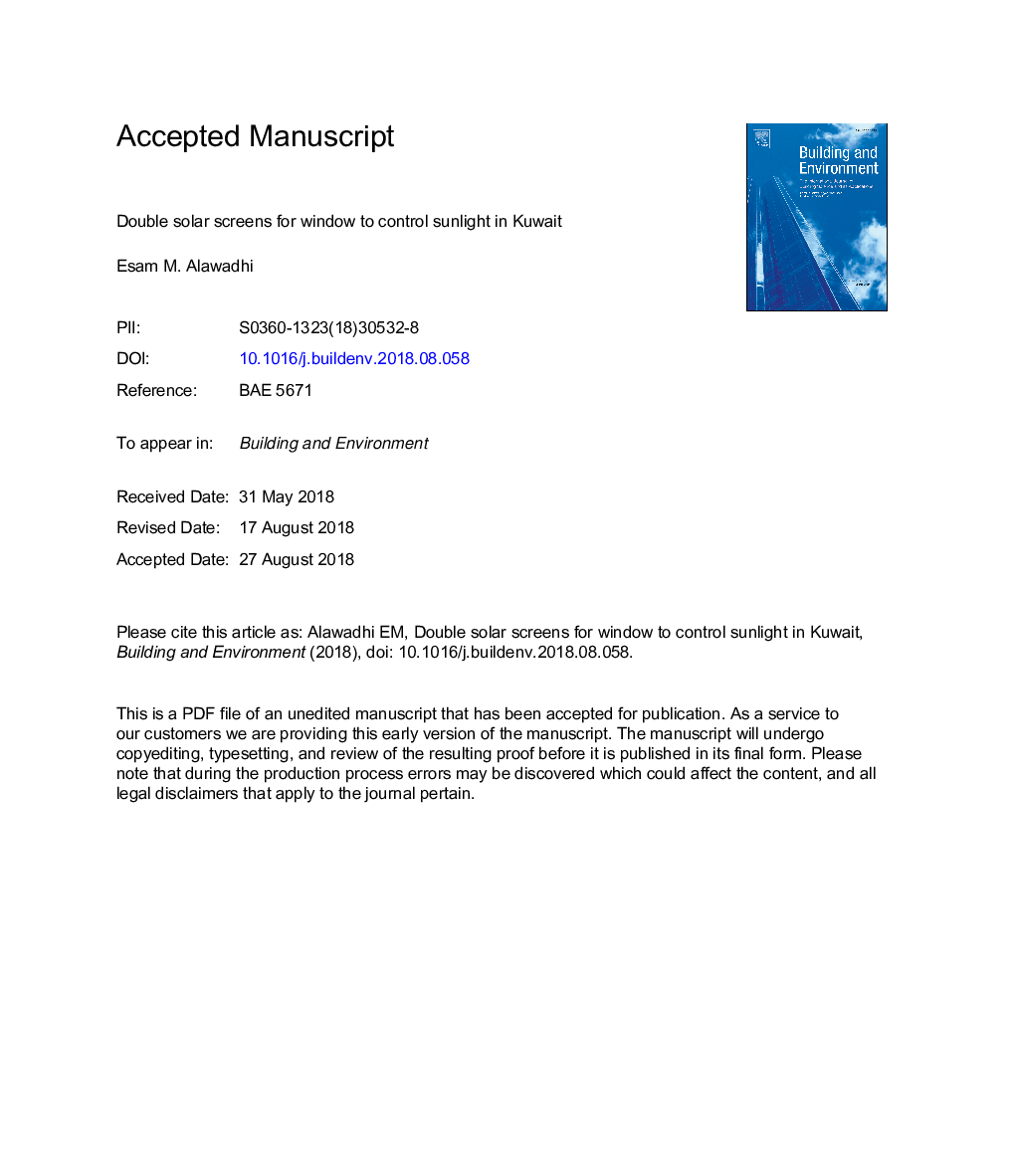| Article ID | Journal | Published Year | Pages | File Type |
|---|---|---|---|---|
| 11000961 | Building and Environment | 2018 | 29 Pages |
Abstract
This research experimentally investigates the concept of double solar screens installed on the external side of a window. The aim of the double solar screens is to control the amount of sunlight entering the indoor space to tackle the negative side effect of sunlight. Two identical perforated screens with square holes are considered, and the perforation ratio of each screen is 25%. Different installation arrangements of the two screens with respect to their holes' misalignment are considered. For comparison purposes, a window without a solar screen and with a single solar screen is considered in the study. The measurements are conducted in mid-June, and screens are installed on the West facing façade window. Without the solar screens, there is significant illuminance level diversity in the indoor space, and it varies between 200 and 13,810 Lux. With a single solar, the indoor illuminance level is decreased by 90%, and the heat flow through the window is decreased by 27.1%. If a second solar screen is installed, the illuminance level varies between 175 and 200 Lux, and the heat flow is reduced between 36.1% and 52.5%, depending on the misalignment of the screens holes. In term of illuminance, solar screens with down misaligned holes show the best performance, while the solar screens with right misaligned holes provide the highest heat flow reduction. The overall performance of double solar screens with down misaligned holes is the optimum in term of the illuminance and heat flow reduction through the window.
Related Topics
Physical Sciences and Engineering
Energy
Renewable Energy, Sustainability and the Environment
Authors
Esam M. Alawadhi,
